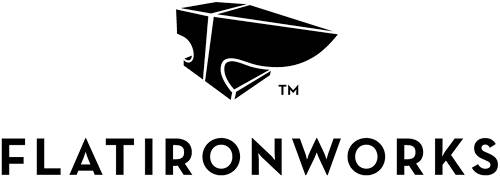Typographic Techniques
| What do you need to know about typography to design logos? Here are some design fundamentals to consider. Selecting a LetterformThousands upon thousands of typefaces are available today with a few clicks of your mouse. But that doesn't necessarily mean that your logo design solution will be found within any typeface collection. Type foundries produce highquality letterforms with style, creativity, and grace, but a specific design problem often requires a specific design solution. Many times a designer will produce a whole new typeface to apply to a client's identity. Other times you will find that an existing typeface can be used, with modifications to individual characters, to fit a client's personality initially. Establishing an initial look through the selection of typeface is a great starting point for establishing a company's identity. Inventive symbols are often generated from a play on a letterform within the client's name. Figure 7.21. The Bretford furniture logo, designed by PlanetPropaganda, exhibits a masterful use of typography. Just look at the many facets of the letter B.
Letterforms as a Visual LanguageCreativity is the process of seeing limitless possibilities. Most people would feel greatly limited by the idea of using a single letter for a logo. But a designer should be able to see the opportunity to apply one of thousands of typefaces to a particular letter, with the possibility of creating a new typeface for that particular letterform. Figure 7.22. Can a single letter represent a company? This three-dimensional G provides an appropriately assertive touch.
Many designers prefer to begin developing a logo that consists entirely of text. By experimenting with fonts, size, and shapes, they seek to find an interesting way to represent the company using the form of letters. Again, simplicity is extremely importantthis is not the time to use fancy decorative fonts. Whether alone or combined with graphic elements, the text in a logo must be easily readable at small sizes. Consider every nuance as you look at letterforms. Being able to explain the background and reasoning for your decisions can be a great benefit in discussions with clients. You must effectively communicate the specialized descriptive terms for professional lettering. A logotype must be legible, particularly if no illustrations are added to make it distinctive. Kerning LettersTo really make your logo's typography stand out, you'll need to explore the technique of kerning. Kerning refers to adjusting the space between two letters. Kerning is usually focused on large type, logos, and headlinesplaces where such tweaking is the most needed. tip Logo designers are never satisfied with using default choices in typography. If you could just type out a logo, why hire a logo designer? Why does kerning often need adjusting? Blame the digital design tools you love. Most people think good type just pops out of the computer by default. On the contrary, graphics programs usually approximate the kerning between digital letters for convenience. Most of the time, type is set small and the computer does a respectable job of adjusting the kerning by default. But when you are working with large type, you should always take a closer lookmore than likely you'll find some inaccuracies in the spacing between letters. Your goal with kerning is to adjust the positive and negative space between the letterforms so that the rhythm appears visually consistentflowing without gaps or tight spaces. Figure 7.23. To illustrate that logo design is indeed a process of evolution, here's how my company logo for Flatiron Industries ultimately turned out. The anvil symbol plays unexpectedly off the theme of ironwork. Hard work, logo design!
|
EAN: 2147483647
Pages: 103


